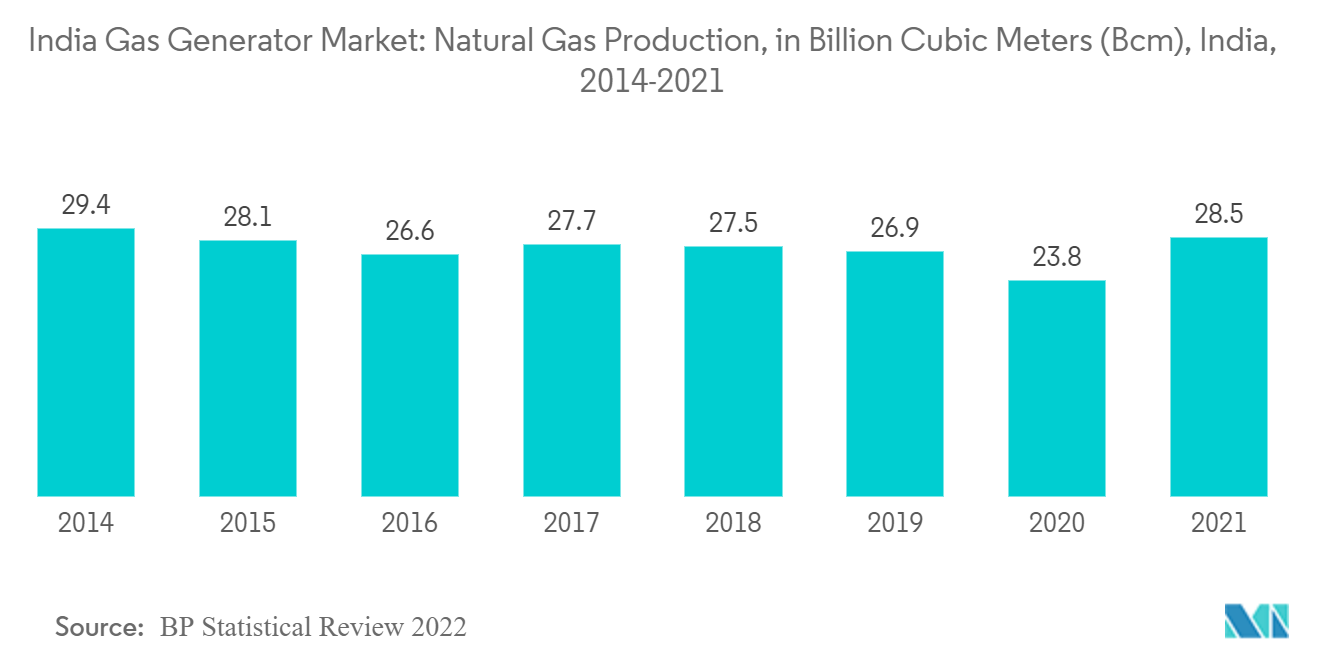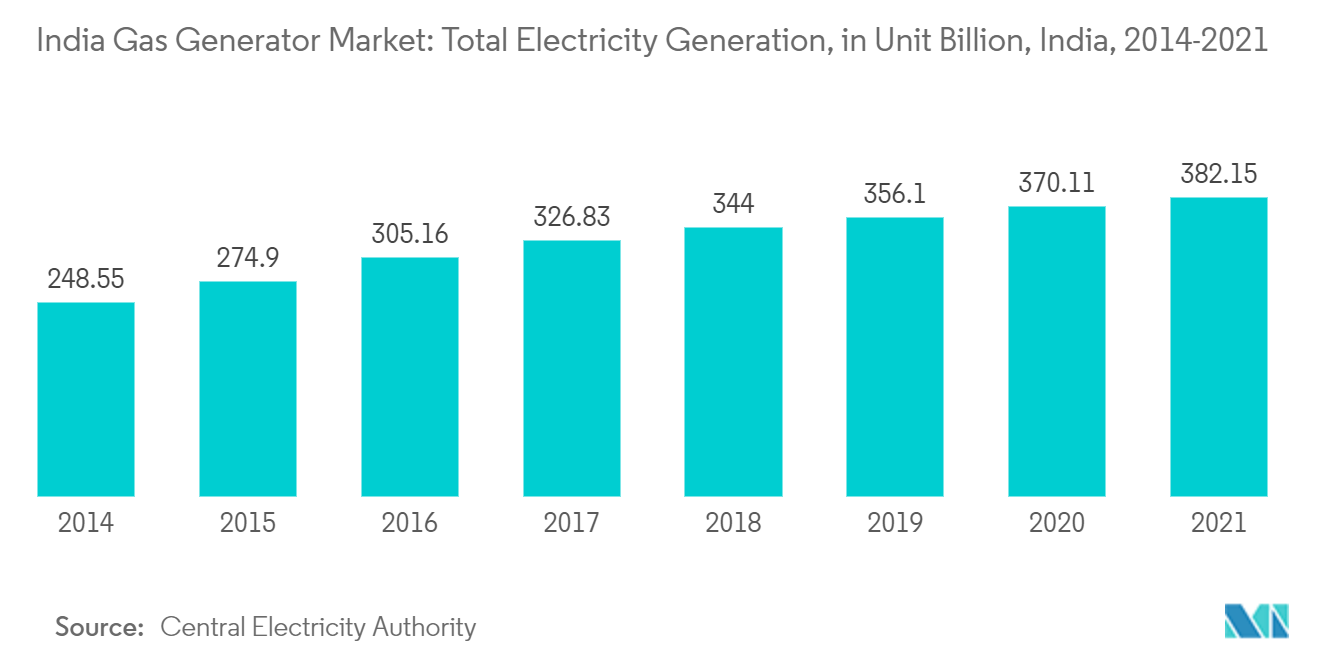Market Trends of India Gas Generator Industry
Below 75 kVA Capacity Gas Generator to Witness Significant Growth
- Less than or equal to 75 kVA gas generators are used in the telecommunication sector, commercial complexes, small restaurants, small-scale industries, and petrol stations, primarily as backup power in grid-connected areas and as the primary power source in off-grid areas.
- The demand for less than or equal to 75 kVA gas generators is expected to increase, with the change in the landscape for small businesses, especially in developing countries like India. As power failure is common in some parts of India, most households and shops prefer portable and affordable small generators.
- The building and construction market is rising in India due to current government initiatives, such as smart cities and green building initiatives, which are expected to create the demand for gas generators during the forecast period and drive the market.
- India is the third-largest producer and second-largest consumer of electricity worldwide. As of 2021, India has an installed power capacity of 382.15 GW. Further, power consumption is estimated to reach 1,894.7 TWh in 2022. Additionally, with 28.5 billion cubic meters of gas production in 2021, the application of gas generators is expected to increase significantly in the forecast period.
- With a reduction in natural gas prices and upcoming residential construction projects, governmental investments in small-scale manufacturing are witnessing robust growth.

Stringent Government Regulations for Diesel Generators will Drive the market
- In 2022, the government of India announced its net-zero policy, which aims to achieve net-zero emissions by 2070. Furthermore, the government has set five targets to reach 500 GW of non-fossil fuel electricity capacity by 2030.
- Furthermore, increasing awareness regarding the use of natural gas in power generation, as it is a clean and reliable fuel, coupled with increased concerns over diesel generator maintenance and its negative impact on the environment, is expected to drive the generator market in the forecast period.
- In February 2022, the Indian environment ministry revised the norms for emissions from power generators which would be effective from July 2023, under which generators of up to 800 kW will have to comply with these new norms. The India Genset Emission Standards- IV+ will apply for generators running on all fuels, including hydrogen. The new emission standards have been issued to tackle air pollution, as the ministry has identified diesel gensets as one of the primary reasons for rampant air pollution. The new emission standards set limits on certain pollutants such as Nitrous Oxide (NO), hydrocarbons (HCs), Carbon Monoxide (CO), and particulate matter (PM) and technical specifications such as compression ignition (CI) and positive ignition (PI).
- Additionally, to curb the rampant air pollution in the Delhi-NCR region, in February 2022, the Central Pollution Control Board (CPCB) proposed a strategy to reduce pollution from diesel gensets via a 3-pronged approach: scrapping diesel gen-sets older than 15 years, mandating the retrofitting of gensets up to 800 kW with emission control devices and impose tighter emission standards for newer gensets which need.
- The country's power generation capacity is dominated by more than 61% of thermal power plants, followed by renewable energy sources (24.7%) and hydropower (12%). Although the country's peak power deficit has been substantially reduced from 16.6% in the financial year (FY) 2008 to 0.4% in FY 2021, the reliability of electricity is still low compared with international standards. Moreover, the country's electricity demand is increasing rapidly due to the increasing population. Existing power grid systems are under pressure to meet the energy requirement, leading to an imbalance of supply, thereby affecting the consumers with load shedding and unbalanced voltage. Such factors are expected to drive the gas generator market in India during the forecast period.


